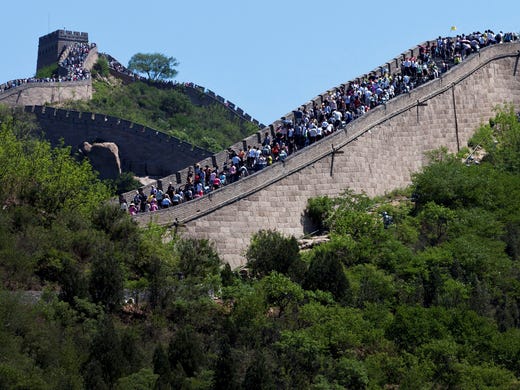The cultural authorities of China are much concerned about the brick-by-brick damage of the UNESCO site, The Great Wall of China.
Officials at the state administration of cultural heritage (SACH) declared that there would be regular periodical inspections which will be carried out along 13,000 miles (21,000km) of The Great Wall of China to ensure whether local municipalities are following national protection measures which were introduced almost a decade ago.
Unfortunately, the laws have done little to preserve or maintain one of the world’s manmade wonders. Adverse environmental conditions such as wind and rain have always been blamed as the major reason for the erosion, however, officials have pointed to reckless human behaviour for destroying sections of a third of the Ming-era wall.
According to China’s Great Wall Society, villagers who live near the wall routinely steal bricks from it to use as building materials or to sell. The group released a survey in 2014 that warned that many towers were also increasingly shaky. Dong Yaohui, the vice-chairman of the society shared his anxiety and said that it is not a large-scale damage but if it is accumulated the different damaged parts, it is very serious.
Parts of the Great Wall date back to the 3rd century BC, though much of it – about 4,000 miles – was built during the Ming dynasty of 1368 to 1644. According to SACH figures, less than 10% of it is considered well preserved.
Lack of resources and oversight in municipalities across the 15 provinces that the wall traverses is thus definitely one of the major factors why the degradation had grown worse over the years. The Ming-era sections north of Beijing are the most popular with tourists, drawing millions of visitors every year and leaving parts of the massive heritage site defaced with graffiti. The villagers sell the bricks or slabs with historic engraving to tourists for 30 yuan (£3).
Tags:
Tags:
